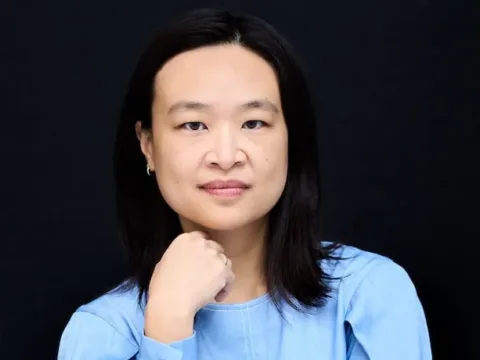In her work, composer Bushra El-Turk blurs boundaries of several kinds: between cultures, disciplines, idioms and genres. The BBC selected her as one of the 100 most inspiring Women of today. London-born of Lebanese descent, she often writes for an inter-cultural ensemble of Eastern and Western instruments. She founded Ensemble Zar, which aims “to be free from the strictly prescriptive etiquette of writing,” inviting an encounter between notation and improvisation. She has written extensively for theatre, dance and multi-media, and incorporates elements of experimental theatre into the performance of the music itself. In her opera Woman at Point Zero (2017/2019), based on the 1975 novel by Nawal El Saadawi, El-Turk employs this inclusive approach to emphasize that the oppression of women is global.
In January 2019, the Pro Youth Philharmonia will perform her orchestral piece Mosaic (2010) several times. This composition takes its inspiration from Mahler’s Das Lied von der Erde, expressing “the same sense of ‘otherness’ and ‘rootlessness’ which Mahler found in ancient Chinese poetry,” and incorporates elements of “quasi-Byzantine” Orthodox chant. Mosaic is also written for the same orchestration as Beethoven’s Pastoral Symphony. We spoke to El-Turk about this upcoming performance run and her work more broadly.
How did the influences that inform Mosaic come together with your own approach?
Mosaic’s frenzied soundscape merges with quasi-Byzantine Orthodox chant, which are heavily decorated at first. Some harmonies were borrowed from Mahler’s Song of the Earth, (the piece that Mosaic was performed alongside in the world premiere, part of the Mahler Centenary celebrations and Manchester Camerata’s Exchanges Festival). The music gradually rises in tension, until a muted string-octet plays as one expressive voice. But this lucid moment is quickly obscured by crunching, fatalistic dissonances.
Mosaic is being performed several times in January 2019, and it has already been played more than once since it was written. For a contemporary work, this is unusual. To what degree do any of your compositions which achieve repertoire status continue to evolve over time?
The answer to this question is quite complex. I guess there are quite a few factors that contribute to a piece’s evolution. Sometimes it’s a matter of different interpretations posed by different performers, sometimes performers study the different recordings before them and bring their own take on it, and sometimes it is the current climate, whether political or otherwise, that informs the interpretations of the same piece. All these factors contribute to a piece’s evolution. Sometimes a piece is performed by ensembles whose musicians or conductors come from different schools of thought. How many performances of a certain piece do we need to see a true evolution, though?
How important are pitch languages and tuning to your creative process?
These parameters are very important as they then play a strong part in the harmonic evolution of the piece or give the piece a strong sense of character. My music is often informed by the ancient musics of a certain culture that existed before equal temperament was established, so that also plays a part in my current musical language. I find this broadens my harmonic palette and expresses a certain aesthetic rawness.

You are representing and exploring not only your own musical heritage but broader Asian traditions as well. How do you treat the layering of cultures in your work while avoiding cultural appropriation?
There are two ways I do this. In the composition: using one parameter from one tradition (e.g. rhythmic elements of an Arabic ekaa) blended with one parameter from another tradition (e.g. the harmonies used in Japanese court music) or it can be a mix of ideologies from these respective cultures. In the music-making: I work closely with musicians from these traditions and give them a strong conceptual base to work from. I invite them to bring their culture and personalities to find a space within my music to feel comfortable enough to express themselves. I notate my music in a way that hopefully gives them fertile ground–enough material to play with, yet frees them creatively.
So many artistic institutions pay lip service to diversity, inclusivity and equity, while at the same time fostering a climate of gender- and race-based discrimination and violence. Can you elaborate on the ways in which your work—as a composer, ensemble leader and teacher—provide potential opportunities to address the human rights and equity gaps in the arts?
I’ve become very aware of these issues and have been invited into the many dialogues hosted by London’s arts institutions about equality–whether it is talking about gender, race or even class. I have become very conscious to utilise this thinking in all aspects of my career. Through my work as a composer, I use narratives to address these issues in my operas. As an ensemble leader, I make sure the various backgrounds are represented equally when programming works for concerts. Through my teaching, I strive to provide an inclusive environment where the music I teach is not euro-centric and involves introducing my students to and questioning them on the diverse musics we have, working from the different perspectives we have.
























